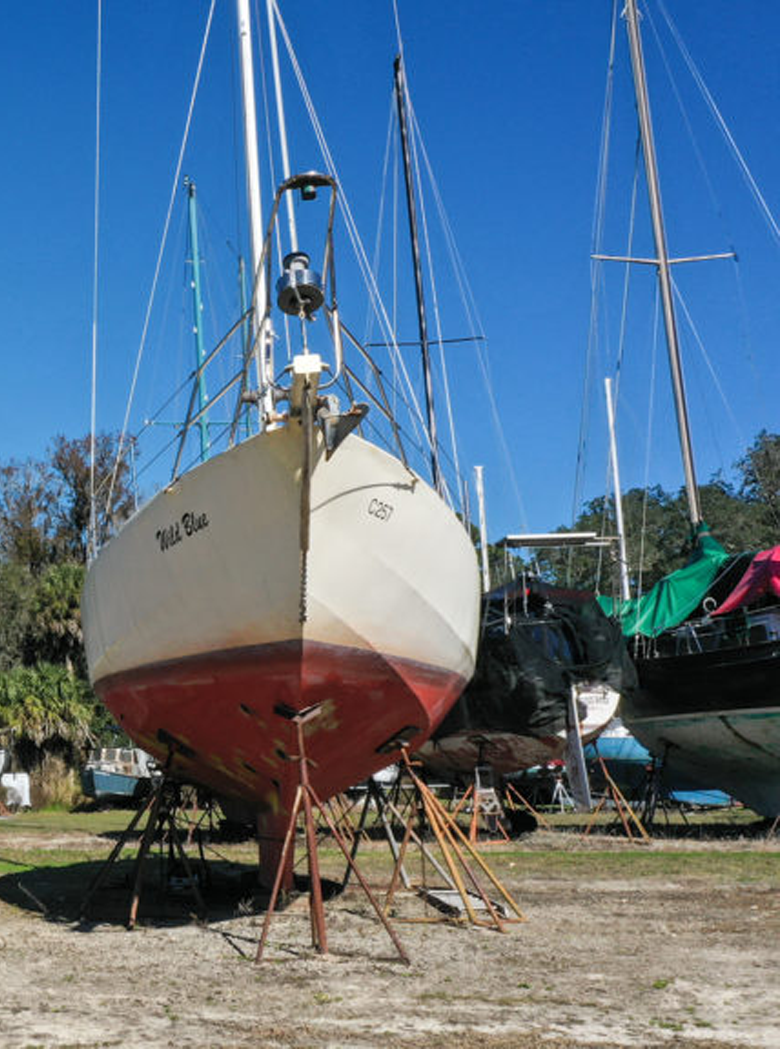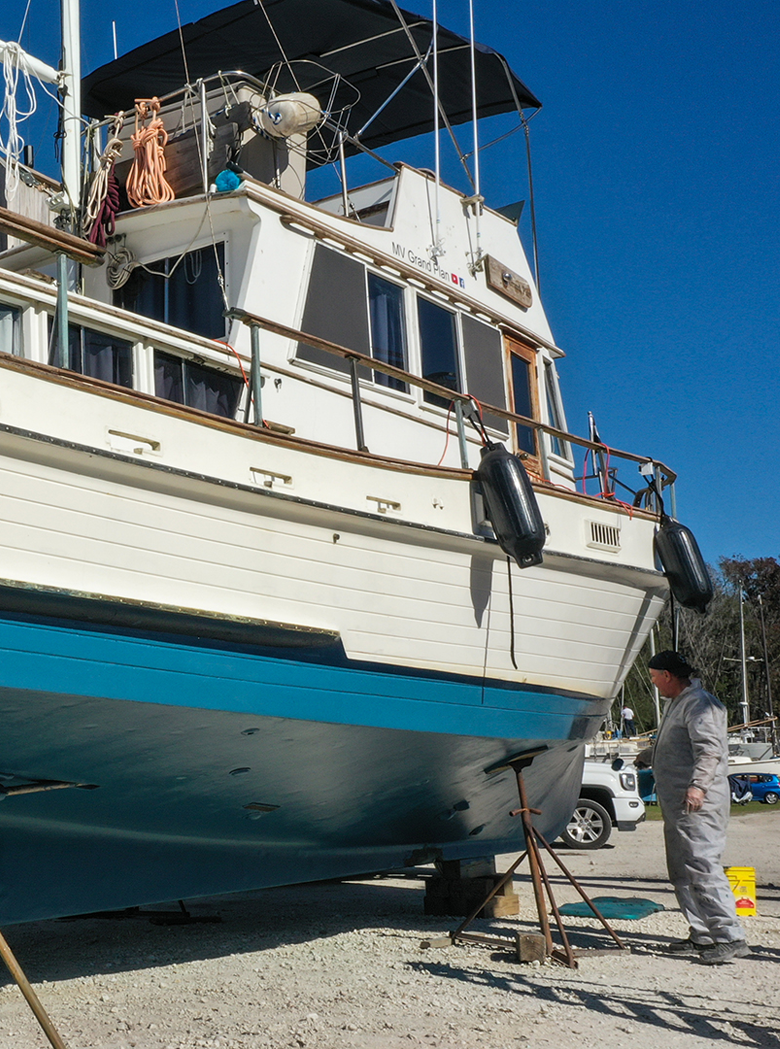The story about Gibson Dry Dock is the story of a man who could not find a boat yard that would allow him to work on his own boat. So he built one!
Robert L (Bob) Gibson was that man. Bob was born in Palatka and grew up on Anastasia Island where he learned to love boats and boating. He built his first sailboat at 16. His father owned the historic Gibson Boat House on River Street in Palatka. He married Palatka native, Sophie Elizabeth Howard Walton, whose relatives operated steamboats on the St Johns River.
When Bob retired as a pilot for Pan American Airways in 1968, Bob and Sophie bought 60 acres on the St Johns River, and Bob started work on developing his dream of a boatyard that allowed owners to do their own work. When Bob died in 1992, Sophie convinced Tom Kight (also a Palatka native), to join her in the operation of the yard. Sadly, Sophie died in 2002. To this day Gibson Dry Dock is still owned and operated by Tom and the Gibson family. Boat owners are still able to work on their own boats.
N 29° 36.681' / W 081° 35.439'
After graduating from Cornell University with a degree in engineering, Bob, the founder had no job because of the great depression (1929 -1941). Bob then joined the Navy flight training program where he became one of the country’s first aircraft carrier pilots!
After leaving the Navy, Bob was hired by Pan American Airways to fly seaplanes, which were commonly referred to as “flying boats”.
As a pilot with Pan Am, Bob and Sophie’s growing family were stationed in Trinidad, San Francisco (where he flew China Clippers across the Pacific), Rio de Janeiro, and finally, in 1942 a home in Biscayne Bay in Miami. Once there, he and his two young sons took on the daunting task of building and completely outfitting a 31-foot Chris-Craft cruiser with berths for their family of six. It was a 2-year project. Every workday, Bob would rally his sons by declaring, come on boys “it’s back to the salt mines” (a reference to the Russian practice of forced labor in Siberian salt mines). Well, that name stuck! And today the “Salt Mine” resides at its home port in San Mateo, at Gibson Dry Dock! This is where Bob was able to finally work on his own boat.



